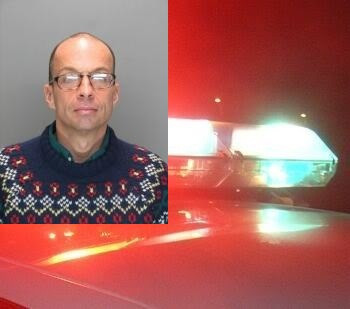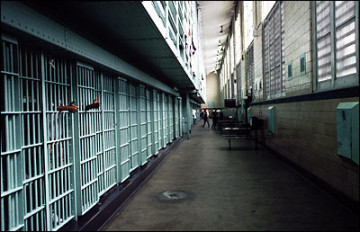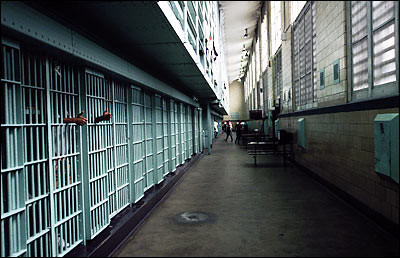Warwick Neighborhood Outraged over Sex Offender Move Near School
Thursday, April 30, 2015
A Warwick neighborhood is up in arms after a sex offender with a high risk of re-offending has moved just outside the legally mandatory 300-foot buffer from an elementary school, John Brown Francis.
Byron de Weldon has moved into an apartment building less than a tenth of a mile from the school. He is the son of famed sculptor Felix de Weldon, the artist behind the iconic memorial depicting U.S. Marines raising the flag over Iwo Jima. (See below slides for more on the tragic story of the de Weldon family.)
State records show that Byron de Weldon has multiple convictions on sex-related charged stemming from incidents involving boys ranging from 11 to 15 years old. The charges include third degree sexual assault, second degree child molestation, and indecent assault and battery on a child. The latter charge was in Massachusetts. At one point, de Weldon was deemed a “sexually dangerous person” under Massachusetts law and committed to the state psychiatric facility in Bridgewater. He also served a prison sentence in Rhode Island, court records show.
GET THE LATEST BREAKING NEWS HERE -- SIGN UP FOR GOLOCAL FREE DAILY EBLASTState authorities have labeled de Weldon a Level III offender, meaning that he has the highest risk of re-offending. Now, out of prison, he is no longer on probation.
His recent arrival in Warwick has set the community on edge and alarmed parents.
“As a parent I’m concerned about him victimizing children and also as a therapist I’m aware of their pattern of behavior,” said Rebecca Carter, whose son attends the John Brown Francis Elementary School. Carter also is a licensed mental health counselor, but she treats only the victims of abuse, sexual or otherwise.
From his vantage point nearby, de Weldon is in a perfect position to watch the comings and goings of students, Carter said. “I just feel they should not be able to live in such proximity,” she added. “They’re Level III offenders for a reason.”
Warwick Schools Superintendent Richard D’Agostino said local authorities had taken the proper security procedures. Once a Level III sex offender has moved into a community and registered with police they, in turn, notify residents who live within half a mile by phone and e-mail. Police also notify the school principle, providing a photograph and other relevant information. That information is then shared with staff and kept on file, according to D’Agostino.
Push for a new state law
But that’s enough for Carter. She says the current state law allows sex offenders to live too close to schools. After reaching out to her local lawmakers, two of them—Sen. Michael McCaffrey and Rep. Joseph McNamara, both Warwick Democrats—have filed legislation in their respective chambers that would extend that minimum 300-foot buffer to 1,000 feet.
When asked how much of a difference the additional 700 feet would make, McCaffrey said every little bit helps. “I think every foot would help. The farther the sex offenders are from a potential victim, the better off we are,” McCaffrey told GoLocalProv.
McCaffrey, who is also chair of the Senate Judiciary Committee, said a preliminary hearing on the bill has been held. He said the bill was held for further study in the face of opposition from the state ACLU but he promised that it would be back before the committee. The House version of the bill, sponsored by McNamara, was also held for further study earlier this month, legislative records show.
D’Agostino told GoLocalProv he supports the proposed legislation. “We’re all for providing an increase in safety for our students. The more safety, the better for our kids,” D’Agostino said.
Up until 2008, sex offenders could live as close to schools as they wanted. Then, that year, the General Assembly passed a law instituting a buffer of 300 feet. The bill in its originally proposed version would have set the distance at 2,000 feet, according to Carolyn Medeiros, the executive director of the Alliance for Safe Communities. “How they whittled it down to 300 feet is sad,” she said.
Carter said she settled on 1,000 feet after researching what is done in other states. A dozen states have 1,000-foot buffer zones, according to the Council on State Government. About half as many double that distance. Only a few states have zones under 1,000 feet. But there are also many states—just under about half of them—that have no restrictions at all. That was as of 2008, but a more recent national survey does not appear to be available.
Medeiros told GoLocalProv she also backs the 1,000 feet. But given arguments about the state’s density, she said she would be open to compromising at 500 feet—but no less. “Absolutely, definitely no less than 500 feet,” she said.
However, even if proponents of the new law are successful, it’s unclear whether that will reduce de Weldon's proximity to the Francis Elementary School. McCaffrey said that will all depend on the final wording of the bill, but he said normally such laws are prospective, not retroactive.
ACLU opposes law as ‘ineffective’
The proposed legislation faces stiff opposition from the ACLU, which also came out against the original 300-foot buffer.
“While it may feel good to pass bills like these, sex offender residency laws are not only ineffective, but counter-productive,” said Steve Brown, executive director of the state ACLU. “The state’s current law—and this bill—make no attempt to differentiate between sex offenders based on their offense, their risk level, the length of time since they offended, or any other relevant factor. It applies regardless of whether the offense involved children.”
But even were such laws restricted just to sex offenders who abused children, Brown noted that they rest on the “flawed assumption” that most offenses are committed by strangers. “Yet the statistics are clear: the overwhelming majority of child sexual assaults are committed by family members, friends, or acquaintances of the victim, not by strangers who find their victims at schools or parks. Thus, a bill like this completely misses the mark, for the problem has nothing to do with not knowing where a sex offender is located,” Brown added.
While doing little to solve the problem, he said such laws could actually make it worse. By making it harder to find housing, sex offenders’ path back into community and society is made more difficult. “[T]he resulting instability can have the effect of increasing, rather than decreasing, the likelihood of recidivism,” Brown said. “It certainly increases their risks of homelessness and limits police ability to monitor their location.”
GoLocalProv attempted to reach out to de Weldon through the attorney who represented him in an unsuccessful appeal before the Rhode Island Supreme Court last year to get one of his no contest pleas tossed out. The attorney, John Sylvia, did not respond to a message seeking comment yesterday.
Related Slideshow: The Tragic Story of the de Weldon Family
In his day, he was feted by royalty and presidents and created one of the most iconic monuments in the United States. But, later in life, Felix de Weldon suffered financial hardship and tragedy, culminating in the posthumous criminal convictions of one of his sons. Below is the story of the de Weldon family. Sources consulted included the following: The U.S. Marine Corps History Division, the Harry S. Truman Library and Museum, Faces of the War College published by the U.S. War Naval College, and the book Exceptional Americans by Don Surber, as well as media reports and court records.
Related Articles
- NEW: Lawmaker Call for Stricter Sex Offender Laws
- NEW: ACLU Files Lawsuit Over Residency Restriction for Sex Offenders
- NEW: Agreement Reached to Keep 3 Sex Offenders Near Schools—For Now
- The Communities with the Most Sex Offenders
- PODCAST: Danger Next Door: The Communities with the Most Sex Offenders
- Sex Offender Loophole Fixed in House Bill
- NEW: Department of Corrections Warns Against Sex Offenders Tonight
- State Report: Another EDC Loan Flop, the Chafee Grad Party & Sex Offenders
- Palumbo, Kilmartin Renew Call for Better Tracking of Sex Offenders
- LISTEN: Investigation: Convicted Sex Offender Lives Near Home for Battered Women
- Warwick’s 28 Sex Offenders at Risk of Re-Offending
- INVESTIGATION: Convicted Sex Offender Lives Near Home for Battered Women
- Cities and Towns with the Most Registered Sex Offenders in RI
- Dear John: My Mother-In-Law Is Sex Offender Paranoid
- PODCAST: RI Cities+ Towns with the Most Registered Sex Offenders
- INVESTIGATION: Sex Offender Counseling Center Opens Near Bus Stop, Gun Shop
- Which RI Communities Have the Most Registered Sex Offenders?





































